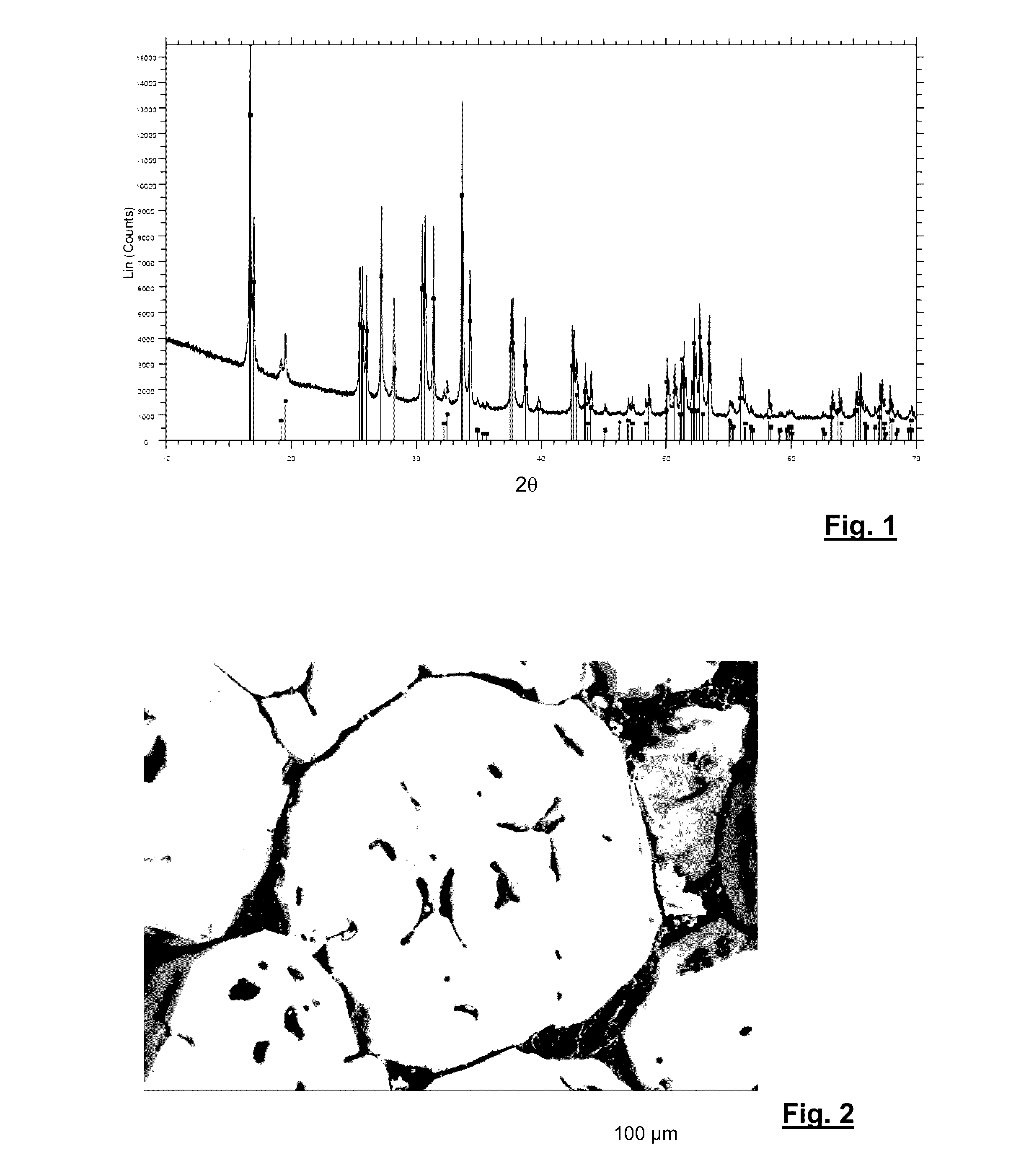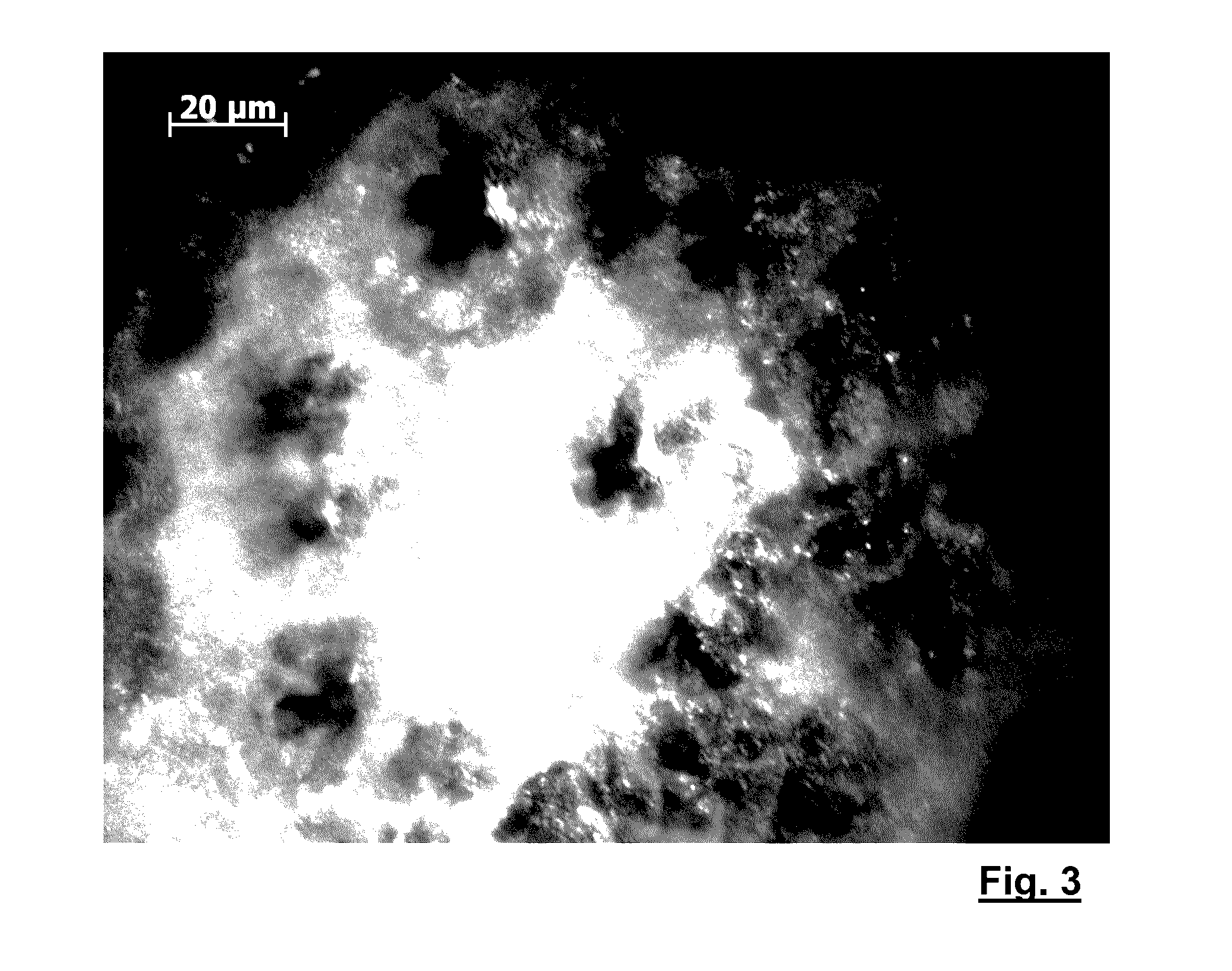Ion-conducting glass ceramic having garnet-like crystal structure
- Summary
- Abstract
- Description
- Claims
- Application Information
AI Technical Summary
Benefits of technology
Problems solved by technology
Method used
Image
Examples
examples
[0056]A glass ceramic according to the invention preferably has the garnet-like main crystal phase according to the chemical formula:
Li7+x-yMxIIM3−xIIIM2-yIVMyVO12,
wherein MII is a bivalent cation, MIII a trivalent cation, MIV a tetravalent cation, MV a pentavalent cation, wherein preferably 0≦x<3, more preferred 0≦x≦2, 0≦y<2, and particularly preferred 0≦y≦1.
[0057]Tab. 1 shows different compositions (in wt.-% on oxide basis) which were used for preparing a glass ceramic according to the invention; the specifics with respect to the proportions of cubic, tetragonal, and amorphous phase are given in vol.-%.
TABLE 1Example123456789Li2O14.0214-1614.3113.8714.3212.8613.2313.9414.65La2O355.2455.1555.0655.3455.1256.0755.8353.6456.37ZrO227.8627.8127.7627.9024.3224.7424.6320.2921.32Al2O32.882.882.872.89Ta2O56.236.346.3112.13Nb2O57.66Cubic phase62%55%40%38%27%49%75%100%100%Tetragonal Phase38%45%60%62%73%51%25%Foreign PhasesnonenonenonenonenonenonenonenonenoneAmorphous Proportionca. 15%ca. 10%1...
PUM
| Property | Measurement | Unit |
|---|---|---|
| Fraction | aaaaa | aaaaa |
| Electrical conductivity | aaaaa | aaaaa |
| Electrical conductivity | aaaaa | aaaaa |
Abstract
Description
Claims
Application Information
 Login to View More
Login to View More - R&D
- Intellectual Property
- Life Sciences
- Materials
- Tech Scout
- Unparalleled Data Quality
- Higher Quality Content
- 60% Fewer Hallucinations
Browse by: Latest US Patents, China's latest patents, Technical Efficacy Thesaurus, Application Domain, Technology Topic, Popular Technical Reports.
© 2025 PatSnap. All rights reserved.Legal|Privacy policy|Modern Slavery Act Transparency Statement|Sitemap|About US| Contact US: help@patsnap.com


